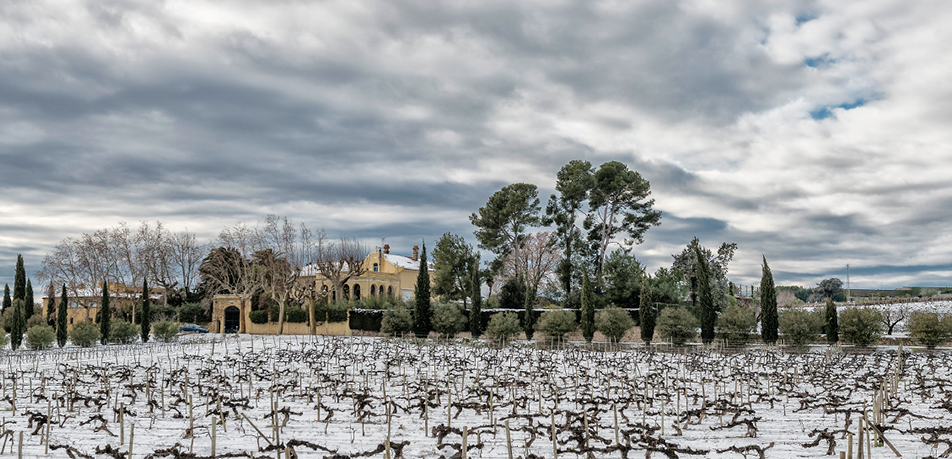CLIMATIC THREATS TO THE VINEYARD

Climate catastrophes are once again shining a spotlight on the unpredictable nature of nature—and the urgent need for a global consensus to reduce the manmade impact that is speeding up the effects of undeniable and irreversible climate change.
The grapevine is very sensitive to changes in the climate, which is why wine-producing countries run the risk of not only seeing radical transformations in the varieties we grow, but also in the topography and landscapes around us. This in turn will alter our cultural winegrowing practices.
Frost
We see hoarfrost when temperatures drop to or near zero degrees, either due to an influx of cold air or temperature inversion. It is the most common kind and causes frost to freeze on the surface of the vine, potentially causing injury to the plant. Cold air stays at the lowest levels of the atmosphere, reaches the ground, and pushes warm air up.
Below-zero temperatures can cause water to freeze inside of the plant, destroying its vegetative tissue. This kind inspires greater dread and is known as black frost.
Hail
Among farmers everywhere, hailstorms might be the most feared of nature's outbursts. Not only does this form of extreme weather bring a sudden accumulation of water, but it can physically damage the plants and their crop.
Plant structures and shoots can break, leaving open wounds that turn into scar tissue, which can affect future harvests. This is why winegrowers try to protect their vineyards whenever a hailstorm is forecast, using nets to minimize its impact.
Wind
When vineyards are exposed to strong gusts of wind, they can suffer severe stress due to a loss of foliage, broken shoots, and the closing of stomata, which causes the plant to cease transpiration. As a result, the plant will experience stunted growth and vigor, photosynthesis will come to a halt, and potential irregularities may affect flowering.
Torrential rains and flooding
Even the most essential things are devastating in excess. At its least destructive, flooding will still affect the productivity of fields and vineyards. Not long ago, our Milmanda vineyard (DO Conca de Barberà) was affected by the floods that ravaged the region and completely destroyed the Rendé Masdeu winery. We stand in solidarity with our peers, and take this opportunity to once again show them our support.
The soil type, quality, or drainage capacity can mitigate the effects of excess water, which can otherwise turn the earth into a breeding ground for all kinds of fungal diseases, especially in spring.
Drought and excessive heat
Nature's tearless sorrow. Prolonged drought brings about a level of water stress that affects the quality of the fruit and vineyard yields. And when drought comes with high temperatures, the risks are even higher. At temperatures approaching 40 degrees, grapes and leaves begin to desiccate.
Among the most common consequences, sunburn is particularly detrimental to the grapes, because it destroys aromas and polyphenols, accentuates phenolic imbalance, and brings out bitter flavors in the wine.
The Familia Torres vineyards most susceptible to drought are planted with ancestral varieties, which have proven more resistant.
What makes these hazards so difficult to counteract is their unpredictable nature. We are defenseless when the planet lashes out. This is what makes prevention so crucial, so that we can mitigate, as best we can, the effects of runaway climate change that is rapidly approaching a point of no return.
